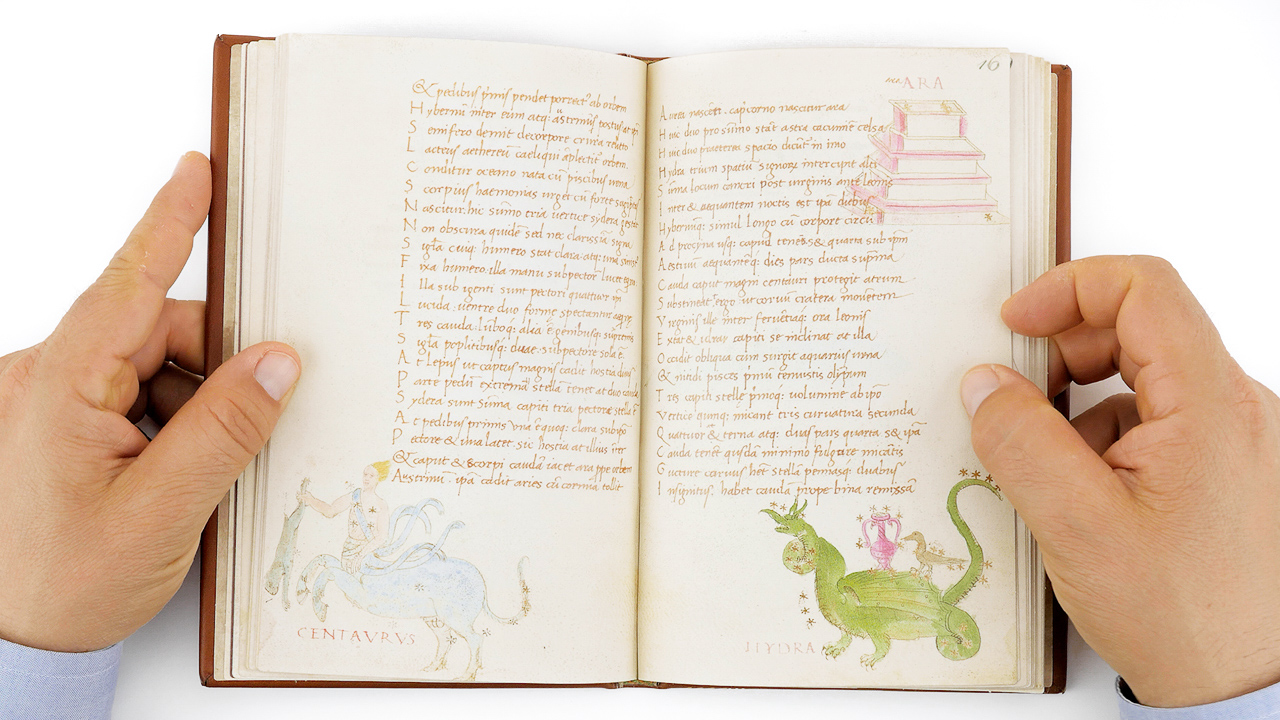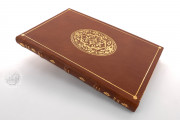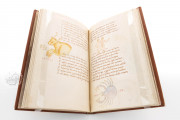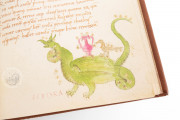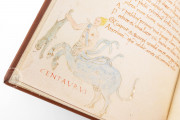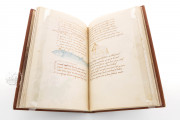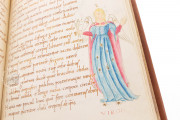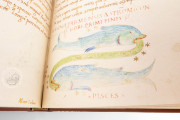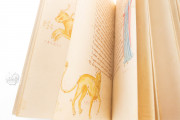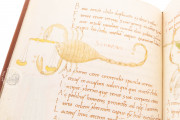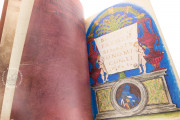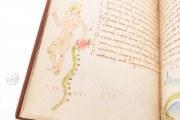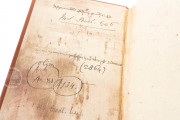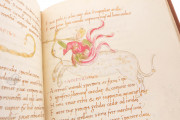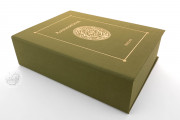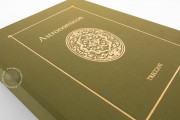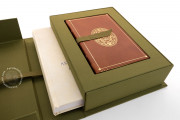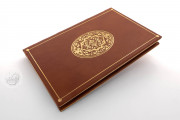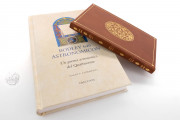The Astronomicon is a mid-fifteenth-century manuscript of Basinio da Parma's poem on the structure of the cosmos, produced in Padua for John Tiptoft, Earl of Worcester, whose coat of arms appears on the title page. Based on classical traditions of Aratus of Soli and C. Julius Hyginus, the poem describes the constellations and the movements of the planets. The manuscript includes thirty-five watercolor illustrations of constellations. The dedicatory note written in silver on a preliminary leaf dyed purple may refer to one Angelo Aquilano as the scribe or donor.
The codex includes Basinio de Parma's Astronomicon Libri II, the first astronomical poem of Italian Humanism. Written around 1455 at the court of Sigismondo Malatesta in Rimini, it is composed of Latin hexameters.
Back to the Classics
The Astronomicon returns to the Classics in the full spirit of the Renaissance. Basinio carefully describes the structure of the cosmos, the constellations and their stars, the motion of the sun and the planets. The captions, written using red ink and capital letters, accompany the miniatures and offer the reader specific indications for the acknowledgment of each stellar group.
It is worth mentioning that the stars forming the constellations embody gold gildings. The parchment codex is composed of thirty-five folios plus two endpapers.
A Few Historical Notions on the Astronomicon
Commissioned by the English Count of Worcester John Tiptoft, the parchment codex was copied in Italy around 1460, with Tiptoft's emblem standing in the richly decorated frontispiece. During his permanence in the Italian peninsula, Tiptoft transcribed a series of works which he brought with him when he got back to England. This manuscript forms part of the cultural project promoted by Sigismondo Malatesta through patronage and sponsorship of the arts.
Basinio (1425-1457) died prematurely at the age of 32; educated between Mantova and Ferrara in Vittorino da Feltre and Guarino Veronese's humanistic libraries, he had the chance to come in contact with the aforementioned codex of Arato's astrological poem.
A One-of-a-Kind Astronomy Manuscript
Taking inspiration from classic examples, Basinio's short poem elegantly describes in two books the celestial sphere, zodiacal and extra-zodiacal constellations, movements of the five planets and the effects of the Lights (Sun and Moon).
Nevertheless, the codex denotes unusual features both when considered within Basinio poetic production or in the context of the rebirth of the fifteenth-century astrological poetry. The Astronomicon books embody an isolated example, destined not to have a continuation. This lack of a follow-up is due to the intention of the Parma's poet to provide an astronomical description of the sky not oriented according to any astrological-divinatory or geometric-mathematic parameter.
Following other events, Sir Richard Worsley donated the manuscript to the Bodelyan Library in the seventeenth century.
We have 1 facsimile edition of the manuscript "Astronomicon": Manoscritto Bodley 646 Astronomicon facsimile edition, published by Istituto dell'Enciclopedia Italiana - Treccani, 2017
Request Info / Price
